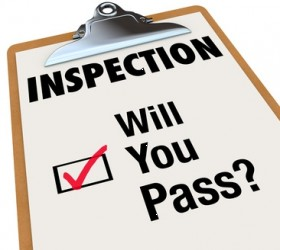 Current Good Manufacturing Practices (cGMPs) are an essential aspect of compliance, and attention on them by regulators is growing.
Current Good Manufacturing Practices (cGMPs) are an essential aspect of compliance, and attention on them by regulators is growing.
In today’s global pharma industry, it’s common to have multiple investigators from around the world inspect your facilities. In recent years, manufacturing facility inspections have grown in frequency and are now performed on a routine basis to ensure compliance with appropriate standards & regulations.
Familiarity with Global Regulators
To date, Neuland has undergone 28 Regulatory inspections from 9 different regulatory agencies – stretching back to 1997. These included inspections by U.S. FDA, the European Medicine Agency, Japanese, Korean, German, Brazilian, Mexican, Australian and French regulators, as well as the EDQM (European Directorate for Quality of Medicines & Healthcare).
Regulatory Documentation
Typically, during an audit, companies will be asked to share a number of documents. This was true of Neuland’s most recent inspection by the U.S. FDA for which the FDA issued an Establishment Inspection Report (EIR) for FDA approval of Neuland’s facility.
Here’s just a sample of the documents or records we’ve been asked to provide regulators during FDA audits:
- List of DMFs submitted in USA
- List of companies authorization
- List of product ANDA approvals or products awaiting for approval
- List of products dispatched to USA
- List of changes from last USFDA audit
- DMFs deficiency letters & responses
- SOPs index and main aspects of the Quality Assurance System (SOPs, records, raw data’s), layouts and diagrams, Quality management/Management of documentation/QRM, Personnel (organogram, qualification, training, job descriptions)
- Complaints, recalls and returns
- Processes for handling out-of-specifications results and other deviations, and reprocess batches & OOT data.
- Documentation for all equipment located in manufacturing areas,
- Practices vs. Procedures for raw material handling SOPs (e.g., receipt, sampling, distribution & storage).
- Online records for temperature monitoring, weighing balance calibration, etc.
- Quality control audit trails and 6 months of audit trail data.
Intensifying Regulatory Scrutiny of Data.
An important part of every Regulatory inspection is a check of company quality records to assess whether the Company follows its own standard operating procedures (SOPs) and work instructions. In recent years, data integrity has become one of the most critical factors to ensuring GMP compliance in the pharma industry.
Regulatory bodies are digging deeper and deeper into data to ensure manufacturing and test information is accurate and consistent.
But here’s the good news: companies who treat every task, every batch and every day as if it were an audit have very little to prepare when it comes to an upcoming inspection.
Here are some of the key success factors we’ve found for regulatory inspections at Neuland:
- Key Regulatory Success Factor 1
A Strong Team with an Open, Honest, Communicative Approach
Openness, transparency, reliability, accountability, customer-centricity and ownership are the behaviors your team should demonstrate. Inspections are very much about trust and confidence; company team members should clearly communicate with inspectors and auditors in order to maintain that trust. Misunderstandings or uncertainties should be clarified as soon as possible. Remember, immediate action on potential deficiencies is usually regarded as a positive attitude – and is appreciated by inspectors. Above all else – company employees should avoid giving the impression that they are being uncooperative, or may hiding something. - Key Regulatory Success Factor 2
Always-On Audit Readiness
The best way to prepare for an inspection is to always be ready for an inspection. As a part of Neuland’s ‘anytime audit’ readiness, cGMP audit readiness and compliance is constantly maintained. Companies with all-the-time or ‘always-on‘ compliance which maintain constant and high level adherence to cGMPs do not need to specifically prepare for upcoming inspections. This readiness eliminates last-minute hurried prep work for audits, and more importantly it reduces or eliminates potential compliance issues. - Key Regulatory Success Factor 3
Understanding Hot-Button Items
As part of ongoing regulatory work, reviewing recent USFDA warning letters & Form 483s that were issued to other facilities can shed light on potential internal issues. It’s a great way to understand what regulators are looking for, and what their current thinking or approach may be.
Regulatory Success Roots in Team’s Dedication to Quality.
Neuland’s decades-long track record of regulatory success is due to continuously maintaining quality and excellence in our API development and manufacturing activities. That mindset owes itself to the Neuland team who constantly work to improve and grow – both as individuals and as a group – to ensure we maintain our focus on excellence.

Across all of our 2017 inspections and audits, I am thankful to each employee who worked hard – and who continues to work hard, every day – to keep Neuland’s facilities in compliance.










